Managing your finances can be a complex task, especially when it comes to understanding your overall financial health. A personal assets and debts calculator is a useful tool that can help individuals gain a clear picture of their net worth. This calculator provides valuable insights into your financial situation by assessing your assets (what you own) and liabilities (what you owe).
In this article, we will explore the importance of using a personal assets and debts calculator, how to create one, examples of its use, and tips for successful financial management.
What is a Personal Assets and Debts Calculator?
A personal assets and debts calculator is a tool that helps individuals assess their overall financial health by providing a clear picture of their net worth. Net worth is calculated by subtracting liabilities from assets. Assets include any items of value that you own, such as cash, investments, real estate, vehicles, and personal belongings. Liabilities, on the other hand, include debts and financial obligations, such as mortgages, loans, credit card balances, and other outstanding payments.
By using a personal assets and debts calculator, individuals can determine their net worth and understand their financial position. This information is essential for making informed financial decisions, setting financial goals, and planning for the future.
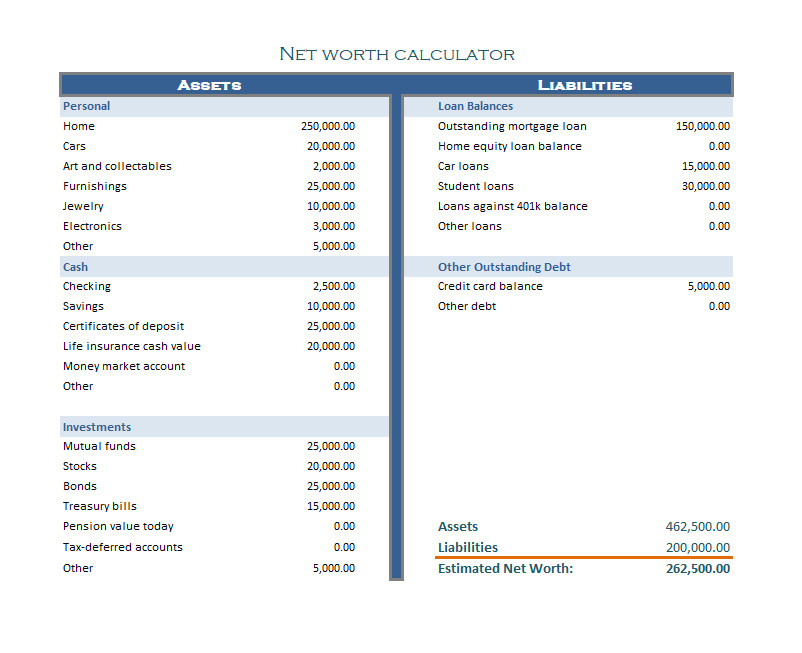
How to Create a Personal Assets and Debts Calculator
Creating a personal assets and debts calculator is a straightforward process. Here are the steps to follow:
- Gather information about your assets: Start by listing all of your assets and their estimated values. This can include cash in bank accounts, investments, real estate properties, vehicles, and other valuable possessions.
- Identify your liabilities: Next, make a list of all your liabilities, such as mortgages, loans, credit card balances, and outstanding bills.
- Calculate your net worth: Subtract the total value of your liabilities from the total value of your assets. The resulting amount is your net worth.
- Create a calculator: Use a spreadsheet software or an online tool to create a calculator. Include fields for assets, liabilities, and net worth. You can also add additional sections for specific types of assets or liabilities if needed.
- Review and update regularly: It’s important to review and update your personal assets and debts calculator regularly to reflect any changes in your financial situation. This will ensure that you always have an accurate picture of your net worth.
Examples of Using a Personal Assets and Debts Calculator
Here are a few examples of how a personal assets and debts calculator can be used:
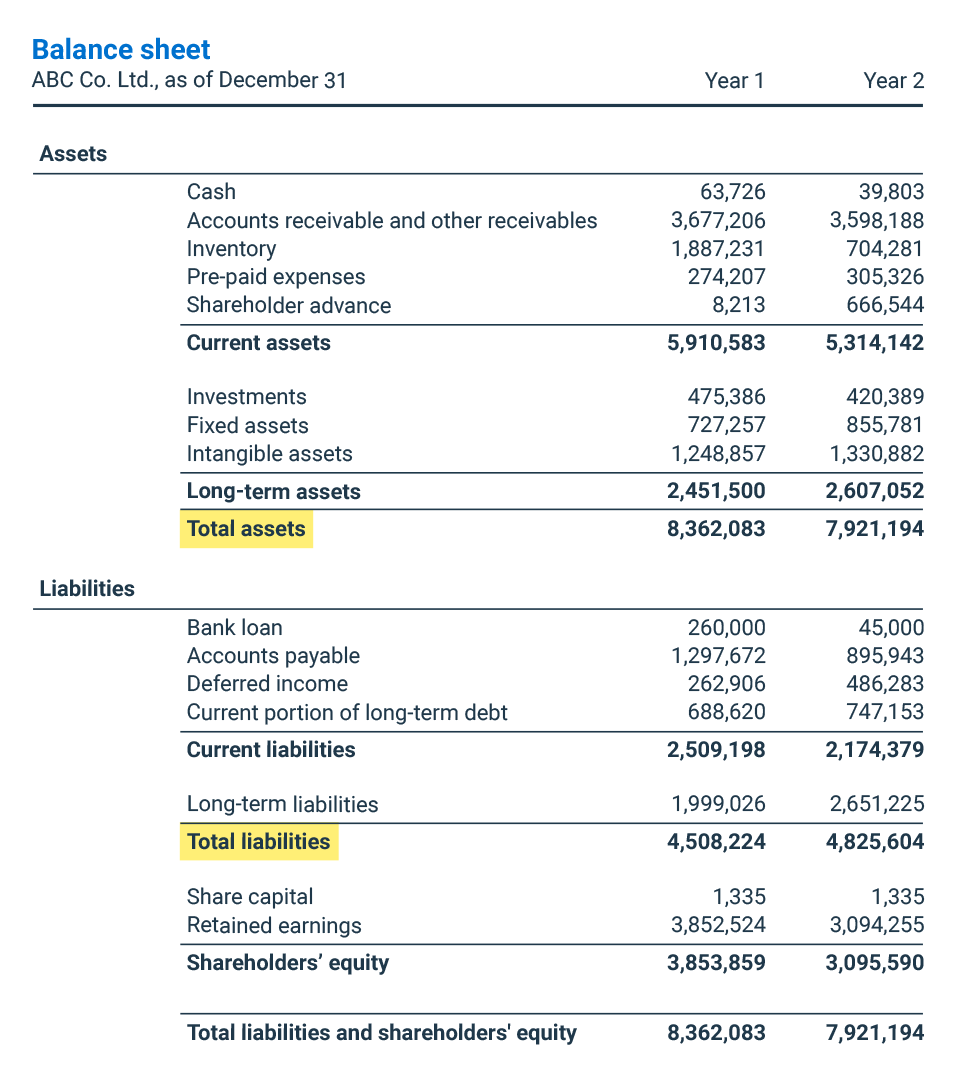
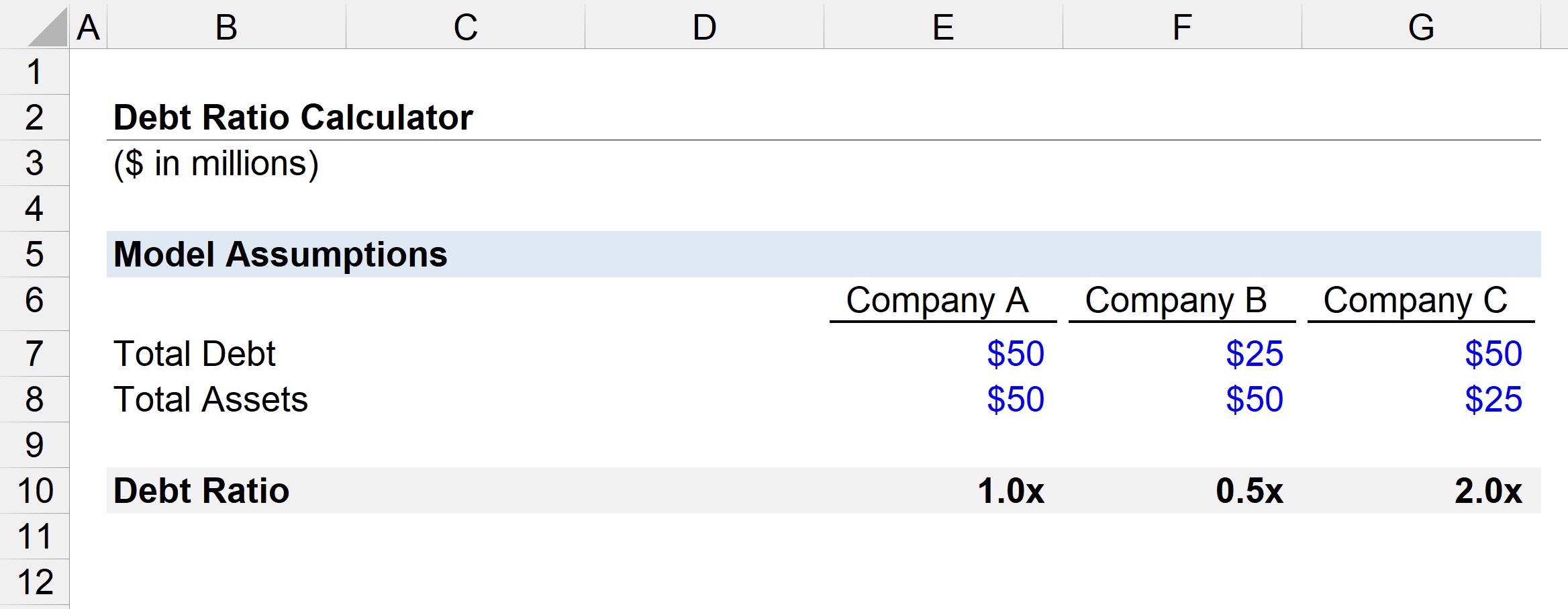
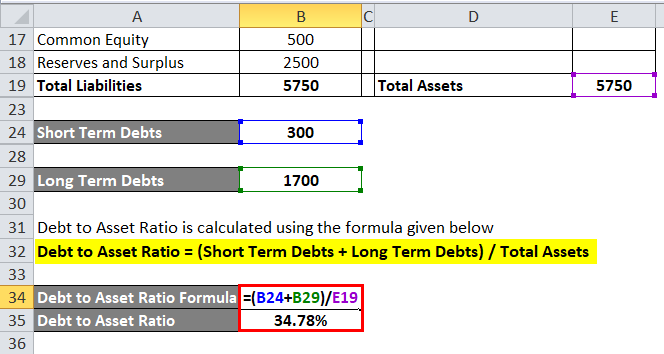
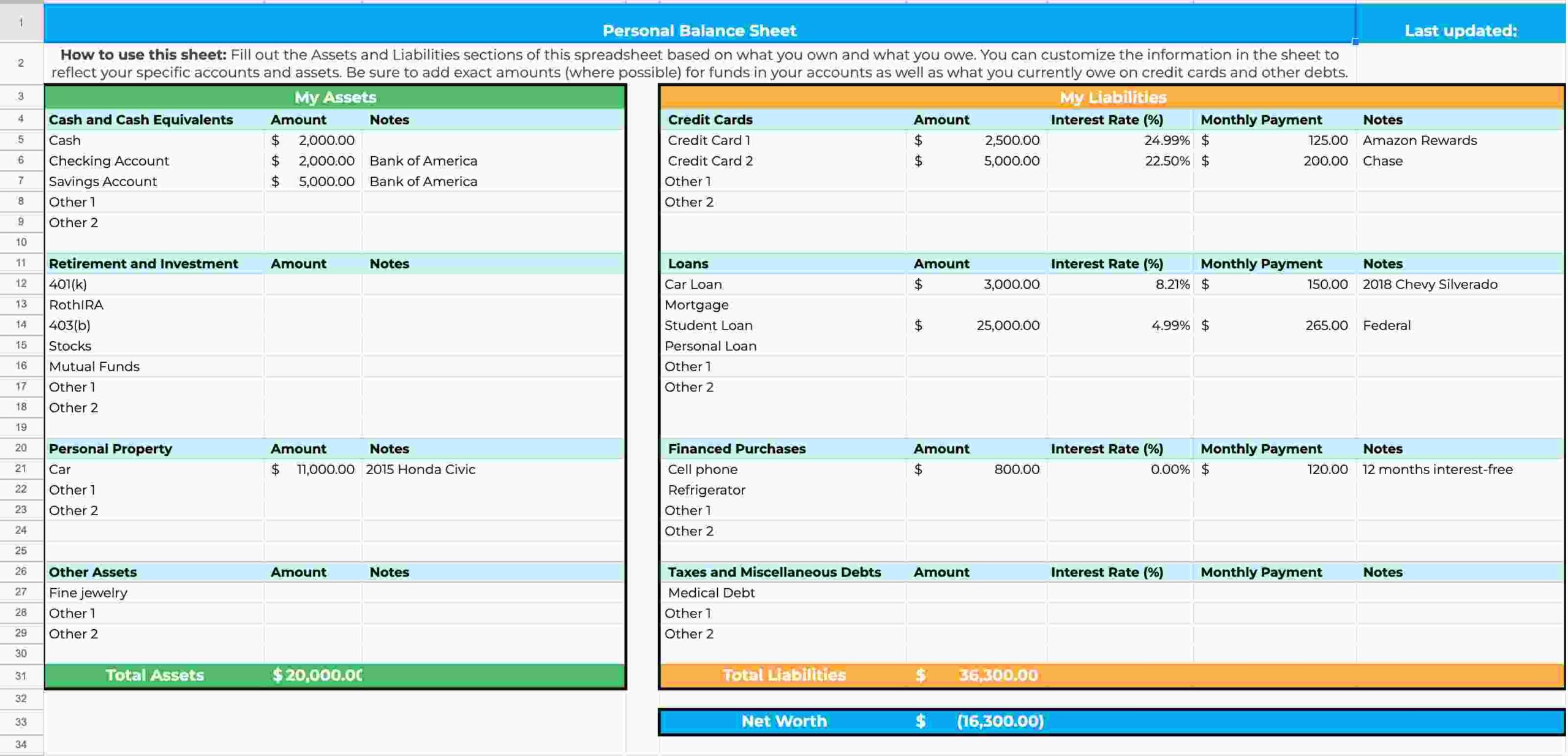
Tips for Successful Financial Management
Here are some tips to help you successfully manage your finances:
- Track your expenses: Keep track of your spending to identify areas where you can cut back and save.
- Create a budget: Set a budget and stick to it. Allocate funds for essential expenses, savings, and discretionary spending.
- Pay off debts: Prioritize paying off high-interest debts to reduce financial stress and improve your net worth.
- Save for emergencies: Build an emergency fund to cover unexpected expenses and prevent relying on credit cards or loans.
- Invest wisely: Consider investing in assets that can grow your wealth over time, such as stocks, bonds, or real estate.
- Review your financial goals: Regularly review and adjust your financial goals to stay motivated and on track.
- Seek professional advice: If you’re unsure about managing your finances, consider consulting a financial advisor for guidance.
- Educate yourself: Continuously educate yourself about personal finance to make informed decisions and improve your financial literacy.
Conclusion
In conclusion, a personal assets and debts calculator is a valuable tool for assessing your overall financial health. By understanding your net worth, you can gain insights into your financial situation, set goals, and make informed decisions.
Creating a personal assets and debts calculator is a simple process, and regularly updating it will ensure its accuracy. By following tips for successful financial management, you can improve your financial health and work towards achieving your financial goals.
Personal Assets And Debts Calculator Template – Download